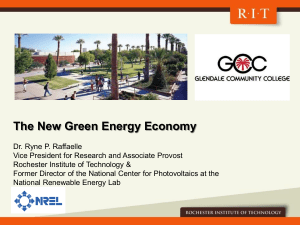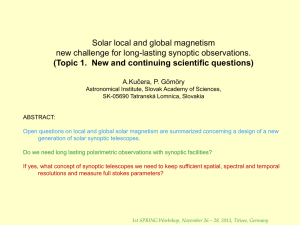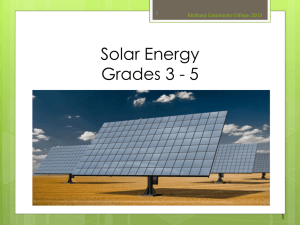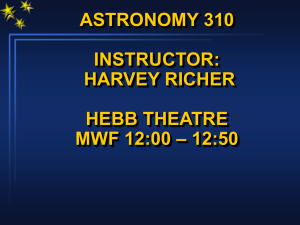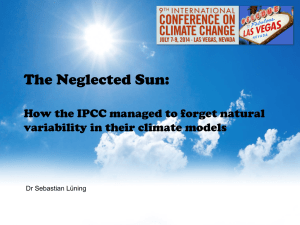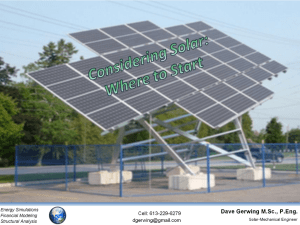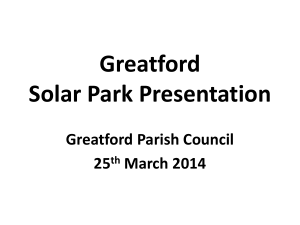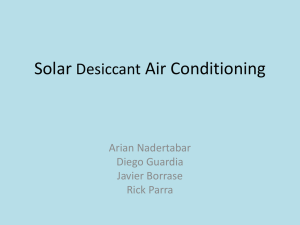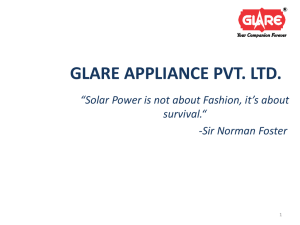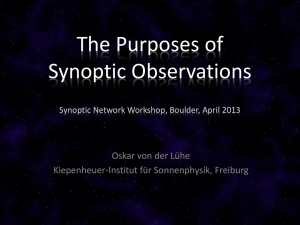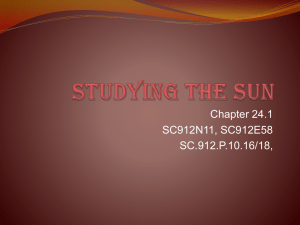Solarnet & SPRING Markus Roth
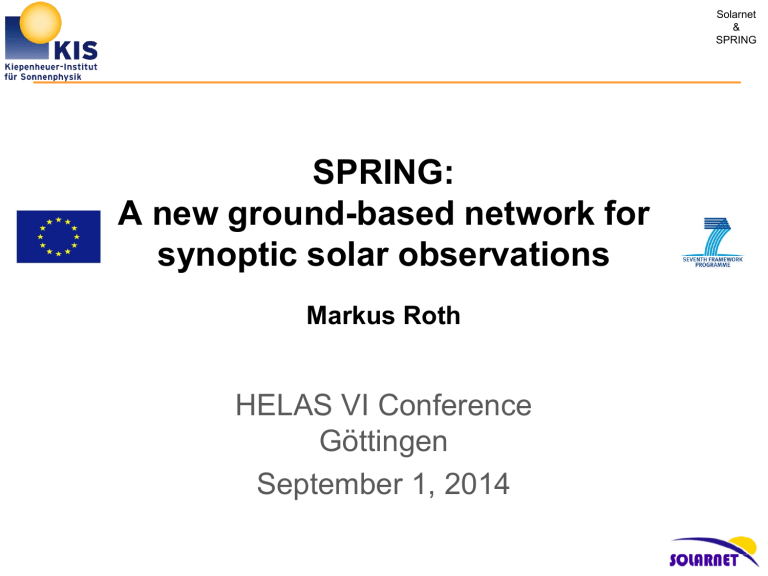
SPRING:
A new ground-based network for synoptic solar observations
Markus Roth
HELAS VI Conference
Göttingen
September 1, 2014
Solarnet
&
SPRING
EU-Project: High-Resolution Solar Physics Network –
SOLARNET
Solarnet is an Integrated Activity (IA) funded by the European Unions’s
FP7Capacities Programme under Framework Programme 7:
Work Programme includes:
• Networking Activities (NAs)
– Workshops & Annual Conferences
– Mobility Programme
– Common Time Allocation Committee
– Definition of Standards for Data Pipelines
– Coordination among infrastructures
• Transnational Access and Services (TAS)
– Infrastructures in Tenerife, ROSA, IBIS
– E-Infrastructures Data Bases of Hinode, IRIS, SDO-AIA, SDO-HMI
• Joint Research Activities
Coordinator:
Project Duration:
Manolo Collados (IAC)
April 2013 – March 2017
Solarnet
&
SPRING
Joint Research Activities under SOLARNET
• Tools for innovative data handling:
– Develop data-reduction pipelines for the most important European ground-based high resolution solar instruments
– Enhancement of observational procedures for increased productivity and easier co-observing and combination of data.
– Set up a prototype for a SVO archive
• Advanced instrumentation development:
– Large diameter FPIs (100 to 300mm)
– Image slicer for 2D spectroscopy
– Microlens-fed spectrograph
– Fast imaging polarimeter
• Wavefront control: turbulence characterization and correction
– Characterization of the daytime atmospheric turbulence at the Canary Islands
– Characterization of the air turbulence produced at the telescopes environment
– Implement an optimized heat rejecter prototype at GREGOR telescope
– Development of numerical simulations to optimize the performance of the adaptive optics systems implement an adaptive optics system prototype at THEMIS telescope
• Solar Physics Research Integrated Network Group (SPRING)
Solarnet
&
SPRING
Synoptic observations:
Solar Physics Research Integrated Network Group
(SPRING)
Solarnet
&
SPRING
Objective: Development of instrumentation for large field-of-view observations of a network of small aperture solar telescopes in support of observations with existing high-resolution solar telescopes (either isolated or in a coordinated way).
Technical Requirements / Future synoptic telescopes should provide
•
Full-disk Doppler velocity images
• Full-disk vector magnetic field images
•
Full-disk intensity images
• Measurments of quantities relevant for space weather
•
Provide the above data products in a variety of wavelengths
• Provide the above data products at a high cadence (≤ 60 seconds)
• Provide the above data products at a spatial resolution of 1” (0.5” pixels)
• Provide the above data products at least 90% of the time
•
Provide the above data products for at least 25 years
• Complement space missions
Participants:
KIS, IAC, INAF, MPS, QUB, AISAS, AIASCR, IGAM, UoB, NSO, HAO
Synoptic observations:
Solar Physics Research Integrated Network Group
(SPRING)
Solarnet
&
SPRING
Participants at the SPRING development
• Operating even a small network (BISON, GONG) is a big effort for a national community
• Designing, deploying and operating a distributed, comprehensive, ground based network requires a new level of international collaboration
– SOLARNET - SPRING
• Opportunity to involve and sustain smaller research groups in solar physics
SPRING Activity – Three Working Phases
1.
Science requirement study
–
–
– describe the supporting data required by high-resolution observing programs the scientific objectives to be achieved by high-quality synoptic observations study of the relation with other existing ground-based solar observation networks
To be studied:
•
List of small aperture telescopes and other ground-based solar observations networks available
• Develop a strawman document discussing the goals and preliminary support instrumental concepts
• Write a Science Requirement Document (SRD) which shall be consistent, tangible and in accordance with other plans for the next 25 years (commissioning of largeaperture telescopes, space missions, etc.).
Solarnet
&
SPRING
SPRING Activity – Three Working Phases
2. Feasibility study
2.1 Instrument design concepts
Definition of technical requirements for the instrument, based on scientific goals
Definition of alternatives of instruments concepts
To be studied:
• Adaptive optics or other image stabilizing/enhancement technology
• Observations in at least the following spectral lines: Ni I 6768, Fe I 6301/2, Na D, Hα, Ca K, Ca
H, He10830,Fe I 6173 and Fe I 1.5 micron.
• High-speed image post-processing / High-speed real-time data access
• Location of telescopes for setting up a network mode
• Possible instruments concepts:
Filtergraph, Spectrograph and Interferometer, each one with different options
2.2 Operational concepts
Develop operational ideas (remote operations, data pipelining, delivery of real-time data to operating telescopes)
Develop high-speed image post-processing routines
Solarnet
&
SPRING
SPRING Activity – Three Working Phases
3. Development and operation study
3.1 Trade-off analysis
Combination of instruments and cameras
Camera set-up and development, particularly in large format and high cadence
Select less than 3 instrument concepts to be detailed and cost estimated
3.2 Network operation and data delivery to high-resolution telescopes
Network operation and performance and on-line data access
Deepening on the studies on data processing and merging, including automated control, data pipelines processing on clusters of CPUs or possible use of Graphical Processing Units and data delivery
Solarnet
&
SPRING
Science Requirement Document
• Motiviation for first workshops in Boulder and Titisee in spring and fall 2013, resp.:
– Collect input for the science requirement document
• The main purpose of this document is:
– Define science-driven requirements for data products to be delivered by a new network of synoptic telescopes
– Driver for the feasibility study
Solarnet
&
SPRING
Ongoing Discussions for the
Scientific Requirement Document
Discussing possible plans for a future full-disk telescope and a platform to carry multiple instruments
• Physics
– Big questions -> what are the physical quantities to be measured
– Multiple-wavelength observations -> what can be learned from them
• Requirements
– Spatial resolution
– Temporal resolution
– Selection of wavelengths -> how to observe them with one setup
• Instrumentation
– Several instruments at one telescope vs. several telescopes at one observatory
– Need for a network
– Joint ground and space observations
• Communities
– Science Community
– User Community
• Data Management
– Ability to handle archives that exist
• Strategy
– How to convince funding agencies to fund a synoptic network
• Operation https://www2.hao.ucar.edu/docs/2013-synoptic-network
Solarnet
&
SPRING
Synoptic observations:
Science Drivers
Solarnet
&
SPRING
• How is the solar magnetic field generated, maintained and dissipated?
– Discriminate solar dynamo models
– Determine the characteristics of angular momentum transport inside the Sun
– Observe, identify and characterize magnetic reconnection
• How are the solar corona and the solar wind maintained and what determines their properties?
– Observe, identify and characterize acoustic and magneto-acoustic waves in the upper atmosphere
• What triggers transient energetic events?
– Determine the role of the interaction of interior flow and magnetic fields
– Establish reliable space weather prediction
• How does solar magnetism influence the internal structure and the luminosity of the Sun?
– Compare the Sun with stars with differ in magnetic activity through asteroseismology
– Determine impact on exoplanet detection and characterization
(From Oskar v.d
. Lühe)
• ROSA
• IBIS
• HELLRIDE
• SOLIS
• BiSON
• GONG
• HMI
• KSO
• PSPT
Existing Similar Instruments
• PHI
• ChroTel
• ChroMag
• MOTH
• GOLF
• VIRGO
• LOFAR
• COSMO
Solarnet
&
SPRING
Instruments
• Vector Magnetograph
• Broad band imager
• Disk-integrated spectrograph (high spectral resolution)
• Multi-lambda-helioseismic-Dopplerimager-and-magnetic-field
• Multi-lambda-vector-magnetometer
• Irradiance device (resolved)
Solarnet
&
SPRING
Group photo, SPRING workshop in Tititsee, November 2013
Solarnet
&
SPRING
Targets
– Sunspots (problems with cool atmospheres)
– Waves (solar interior)
– Active regions
– Transient events
– Prominences
– MHD waves (magnetoseismology)
– Synoptic Hanle Observations
– Quiet Sun magnetism
– TSI / SSI
– Space Weather
– Flow of energy through the solar atmosphere
– Velocity field inside and on the Sun
Solarnet
&
SPRING
Million-$ Questions
– What is the origin of the solar activity cycle?
– What is the structure, dynamics, and energetics of the solar atmosphere?
– How does the Sun drive space weather?
– What are the signatures of solar activity?
Detailed questions for a synoptic network
• What is the magnetic field in the chromosphere and photosphere?
Solarnet
&
SPRING
Working Groups
Group 1 Synoptic magnetic fields
– Sunspots (problems with cool atmospheres)
– Active regions
– Quiet Sun magnetism
– Synoptic Hanle Observations
Pevtsov, Socas-Navarro,
Schlichenmaier, Ermolli, Gosain,
Sobotka, Borrero, Hasan, Schmidt
Solarnet
&
SPRING
Group 3 Transient events
– Flow of energy through the solar atmosphere (3,2)
– Transient events
(flares, prominences, CMEs)
Kucera, Gömöry, Jain, Gosain, Keys,
Sobotka , Polanec, (Zuccarello),
Del Moro
Group 2 Solar seismology
– Waves (solar interior)
– MHD waves (magnetoseismology)
– Velocity field inside and on the Sun
Jain , Leibacher, Del Moro, Erdelyi,
Schou, Roth, Thompson, Hill, Hasan,
Finsterle, Keys, Zaatri
Group 4 Solar Awareness
– TSI / SSI
– Space Weather (4,3)
– Space Climate
– Sun-as-a-star
Pevtsov, Toufik, Del Moro, Scuderi,
Ermolli , Davies, Finsterle, Hill,
Thompson, Berrilli
Further questions to be answered in working groups
• Current observations <-> future observations
– What needs to be done differently/better?
– Magnetic field measurements in the umbra needs improvement compared to HMI -> How?
• Many lines at moderate spectral resolution <-> a few lines in high spectral resolution
• Unbalanced <-> balanced vector magnetograph
– What needs to be done to answer this question
• Requirements from other communities (e.g. Space Weather)
– Existing definitions already made
Solarnet
&
SPRING
Science Requirements
• Wavelength ranges
– Optical
– Infrared
– Radio
• Measurements of vector magnetic field
– Saturation effect
• Doppler measurements
• Full-Disk observations
• Disk integrated
– Irradiance
– Solar-stellar comparisons
• Long time series (25 years)
• Cadence dependence on measurement
– v < 60 s;
– transient events: 1s (only partially)
– B
• Multiple heights
• Off-limb observations
– Prominences
– Stray light
Solarnet
&
SPRING
Science Requirements
• Coronographic capability
• High-duty cycle
• Uniformity of data
• Stability over time; durability
• Spatial resolution 1 arcsec
• Sub-pixel image alignment
• Polarimetric reference frame
• Reliable operation
• High level of automatisation
• Accessible and repairable
• Upgradeable
• Open data policy
• Science-ready data
• Data products
• Help-desk for users
Solarnet
&
SPRING
Priorities =
Minimum Requirements
• Full-disk vector magnetograph
– Minimum set of lines: deep & medium photosphere, chromosphere (Ca II)
– Doppler
• H ®
– Doppler
• Cadence: 30s (part-time 1s)
• Continuum (white light)
• 1 arcsec resolution
• Image stabilization
Solarnet
&
SPRING
Working Group Status
• Group 1: First draft
• Group 2: Discussions still ongoing
• Group 3: Transient events – finished
• Group 4: Discussions not started
Solarnet
&
SPRING
Personnel
– Sanjay Gosain to work at KIS and NSO since
May 1, 2014
– Strong collaboration with National Solar
Observatory, Tucson
Solarnet
&
SPRING
Future Planning
• Outreaching:
– Exposition on SPRING
– Including / Contacting / Joining teams and possible operator sites worldwide
• Using Newsletters to inform about SPRING
• Register for the
2nd Solarnet/SPRING workshop in 2014 in Tatranska Lomnica
– to finalize the SRD
• Technical Study to be completed in March 2016
– 3rd/4th workshop to work and discuss the technical study in 2015
• Final proposed instrument concepts and operation plan to be completed in
March 2017
Afterwards:
Possible start to work on prototypes → Funding (Solarnet II)
Solarnet
&
SPRING

